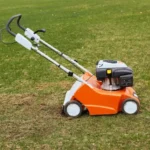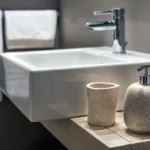Allergies increasingly impact daily life, affecting millions worldwide. In the United States alone, approximately one in three adults reported experiencing seasonal allergies, eczema, or food allergies in 2021. Given these substantial numbers, finding effective solutions is imperative.
Modern filtration technologies stand out as one of the most effective advancements, enhancing safety in indoor environments for those affected by allergies. But what mechanisms do these technologies employ, and what options are available? This article delves into the innovative solutions reshaping our approach to managing allergens.

Understanding Allergies and Filtration Solutions
When the immune system reacts to substances such as pollen, dust mites, pet dander, or mold, it triggers allergic reactions that can present symptoms from mild sneezing and itching to severe respiratory problems.
Advancements in air filtration technology have been swift, introducing refined solutions, including HEPA filters, activated carbon, and ionic filters. Each type is designed to target specific particles and pollutants. This progress in filtration technology guarantees that individuals can select systems that align with their specific requirements, efficiently controlling and preventing allergic reactions by improving the air quality in their living spaces and work environments.
HEPA Filters: The Gold Standard
High-efficiency particulate air (HEPA) filters excel in capturing airborne particles, including allergens. It’s important, however, to choose a reputable provider such as Atomic Filters, as the quality of HEPA filters can vary significantly. These professionals offer high-quality HEPA filters that capture 99.97% of particles as small as 0.3 microns, which play a pivotal role in homes and workplaces, particularly where dust, pollen, or pet dander are prevalent. Utilizing Atomic Filters guarantees that the air remains pure and safe, drastically reducing allergen presence.
The dense media in HEPA filters capture particles through interception, impaction, and diffusion, which is important for maintaining excellent indoor air quality. Ensuring these filters are maintained and replaced regularly is essential to sustain their effectiveness, providing continuous relief from allergens in settings where air quality is important, such as in homes with pets or healthcare facilities.
Ionic Filters: Harnessing Technology for Cleaner Air
Ionic filters employ an electrical charge to attract and capture particles. This method is unique compared to traditional filtration techniques because it removes ultrafine particles without a physical filter.
However, to avoid the production of harmful ozone as a byproduct, these filters must be operated correctly. Ionic filters are most effective in settings that require a reduction in airborne viruses and bacteria, as they prevent the accumulation of pathogens on filter media.
Regular cleaning of the collecting plates is important to maintain both their effectiveness and safety. This technology is ideal for environments that demand near-sterile air conditions, such as laboratories or hospitals, where it significantly enhances control over airborne contaminants.
Beyond Air: Innovations in Water and Surface Filtration
Not limited to air, innovations in water and surface cleaning technologies are also important in preventing allergies. Water filters remove allergens and contaminants from domestic water supplies, while new surface cleaning technologies employing ultraviolet light or sophisticated chemical formulations, sanitize surfaces and mitigate allergen presence.
These technologies are becoming increasingly accessible to consumers, simplifying the implementation of advanced cleaning solutions in homes. Surface cleaning technologies that use UV light are particularly effective not only against allergens but also against pathogens, providing an excellent option for families striving to maintain a sterile home environment. As these technologies develop, they offer a holistic approach to allergy management by addressing various allergen sources within indoor settings.
Smart Filters: The Integration of IoT in Allergy Prevention
Integrating smart technology into filtration systems marks a significant advancement. Smart filters excel in monitoring air quality continuously and adjusting their function to align with real-time conditions, enhancing both effectiveness and energy efficiency. Remote monitoring and control, facilitated by IoT technology, prove particularly advantageous for those with severe allergies or asthma, allowing for proactive management of environmental triggers.
These devices also compile data progressively, providing valuable insights into air quality variations and identifying common sources of allergens. The automation of air quality management by smart filters ensures a safe living or working environment, eliminating the need for frequent manual intervention.
Choosing the Right Filter for Your Needs
The selection of an optimal filter necessitates a comprehensive evaluation of several variables, including the size of the area, the allergens that pose a risk, and additional attributes like noise suppression and power conservation. Comprehending the detailed specifications and upkeep demands of various filters is vital to ascertain their suitability for your environment. For instance, homeowners in high-pollen zones should opt for a filter with a high Clean Air Delivery Rate (CADR) for pollen.
Moreover, analyzing the ongoing expenses related to filter replacements and energy consumption will help pinpoint the most cost-effective and efficient filtration solution for your specific setting. Making informed choices in filter selection can substantially improve living conditions and mitigate allergy symptoms.

Conclusion
The evolution of filtration technology injects new optimism into the lives of people suffering from various allergies. Opting for the most fitting filters and technologies can drastically cut down on allergen exposure, thereby boosting both comfort and overall well-being. Although technology plays a pivotal role in this battle against allergens, keeping your environment pristine through regular cleaning and reducing the entry of outdoor allergens is indispensable.




No Comment! Be the first one.